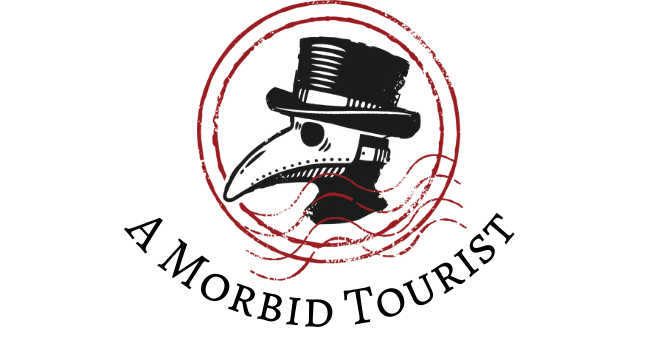I spent some time looking for the original grave of Karl Marx. It was marked (Marxed?) on the map but only approximately, as it’s located in a very crowded and old part of the cemetery. Try as I might, I couldn’t see it among the many headstones and long grasses growing hither and thither. So there’s a challenge if you ever visit Highgate: try to find Marx’s ‘real’ grave site! (If you have managed this, please comment and feel free to gloat)

Highgate Cemetery: The Wild West Side
One of my first observations was just how lush Highgate is (especially the west side). There are tall trees, and lots of what people may call overgrowth. To me, this adds to the beauty and charm, the peace, and the thoughtfulness of Highgate. I don’t know… I sometimes find over manicured graveyards a bit soulless. Here at Highgate, the trees are even trying to reclaim tombstones in some places!

The Charterhouse and its Plague Skeleton
I’ll be honest with you – I originally only went to the Charterhouse for the skeleton.
Let me explain. The Charterhouse as a building began its life in 1371 and was a monastery. However, before any structure stood there, the area was used as a plague pit. During the Black Death, which began in 1348, London was overwhelmed with the dead and churchyards filled up fast. The solution was to dig enormous pits to inter piles of corpses all at once.
One of these pits was established in what is now Charterhouse Square, and it was upon this ghoulish site that The Charterhouse was built.

Komine Pass: A Murderer’s Hunting Ground
We stopped walking at one point and had a discussion about whether we wanted to proceed – the feelings of fear had gotten that bad. Instead, we talked ourselves up and swore at ourselves and said that we were so close now, that we had to see this through. So we continued, shuffling even slower and clutching each other’s hands. I was afraid that, any minute, the torch would illuminate something that shouldn’t be there. I don’t think I’ve ever been that viscerally frightened in my life. Something felt sick there.

Mary Shelley’s House of Frankenstein
One of the best parts of the story of Frankenstein is the realisation that the doctor himself is more of a monster than the so-called ‘monster’ he created. Frankenstein’s Monster is gentle and curious, as well as highly articulate once he’s learned and practiced human language. I personally believe it’s one of the first examples of the ‘we are the monsters’ trope that is found in a lot of modern media.
There is also the popular question of the morality of playing god, and the theme of science going too far, just because it can (insert Jeff Goldblum in Jurassic Park here). These themes are so relevant even (and with the rise of advanced robotics and AI, maybe especially) today.

A Funeral From the Director’s POV
Naturally, I’ve always had a morbid fascination with funerals. The ceremonies, both secular and religious. The rituals. How funerary practices differ around the world. All aspects of death are interesting to me, but I especially like to learn the cultural ideas behind funeral traditions. I was devastated when I found out I’d probably never get to have a Tibetan Sky Burial, which would be my preferred send-off.

Crossbones Graveyard and its Outcast Dead
What struck me most about Crossbones is how much it’s retained a graveyard’s tranquillity. There are still many remains beneath the ground, but they aren’t marked out or named like a more traditional cemetery. Despite this, the place still has the muted peace that seems to cut off the usual noise and hustle of the city around it. The atmosphere was added to by the soft smell of incense burning nearby. Wandering around Crossbones put my mind in a calm, reflective place that I thoroughly enjoyed.

